


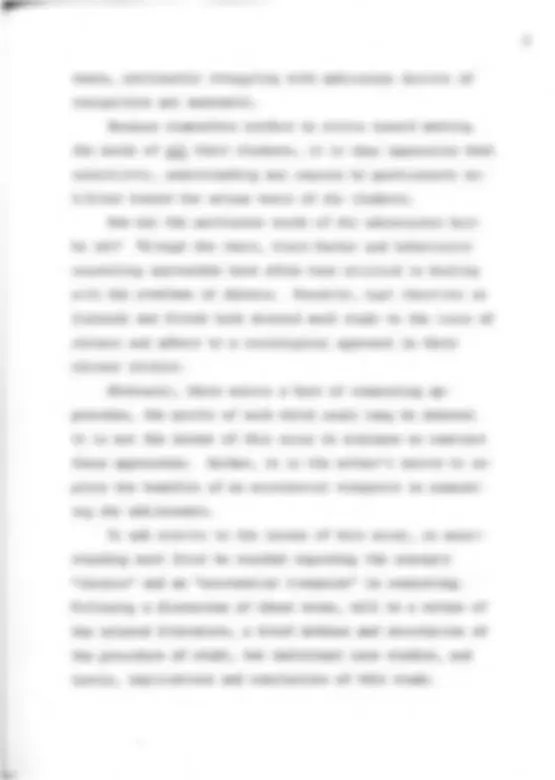
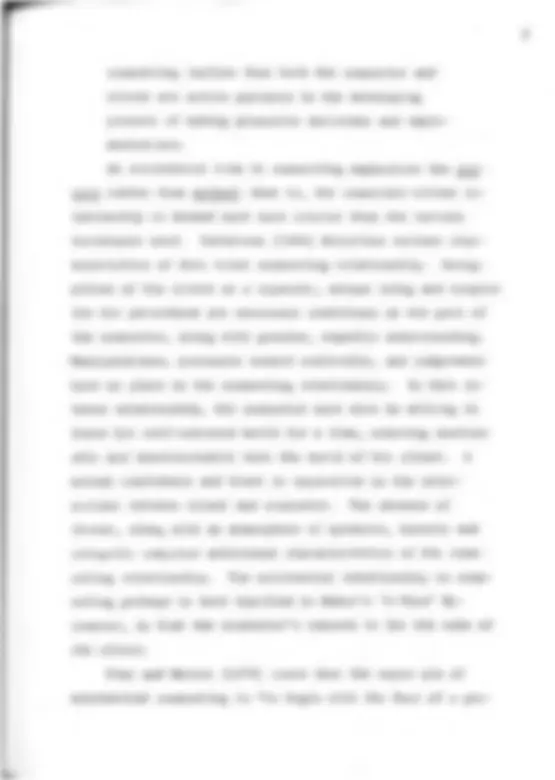
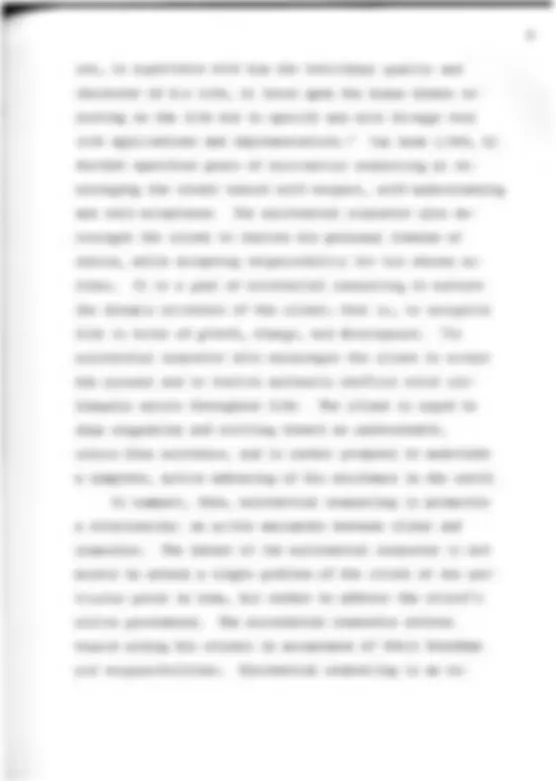

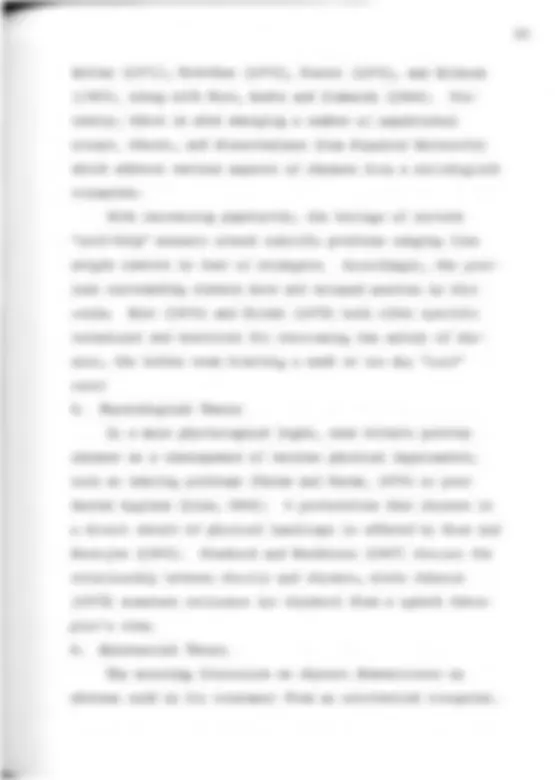
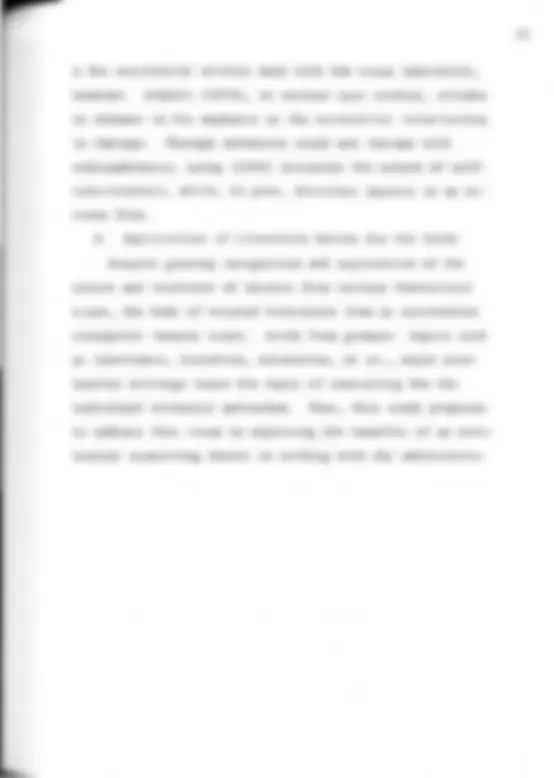
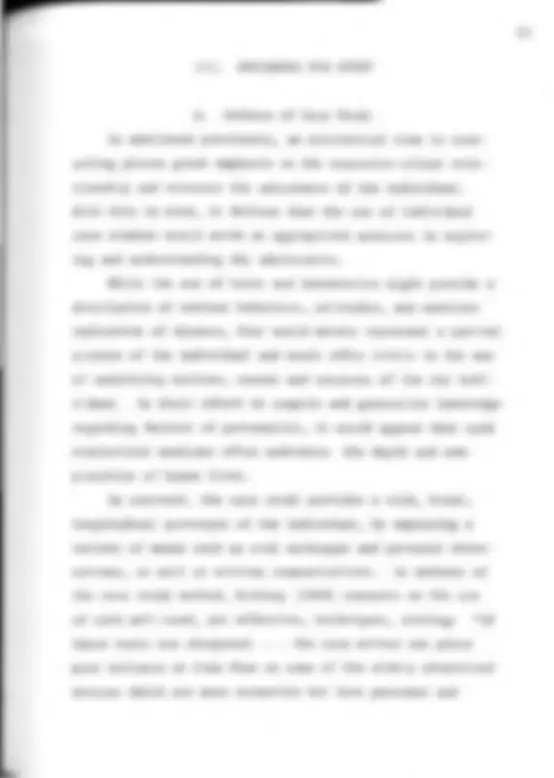
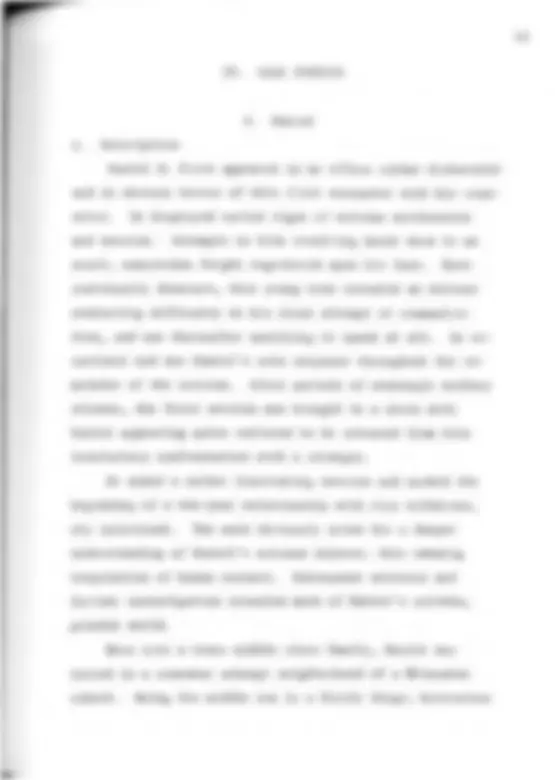
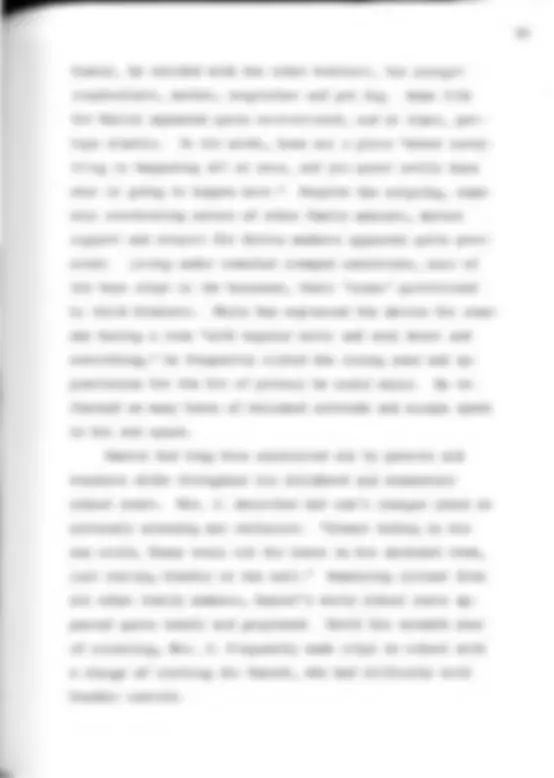
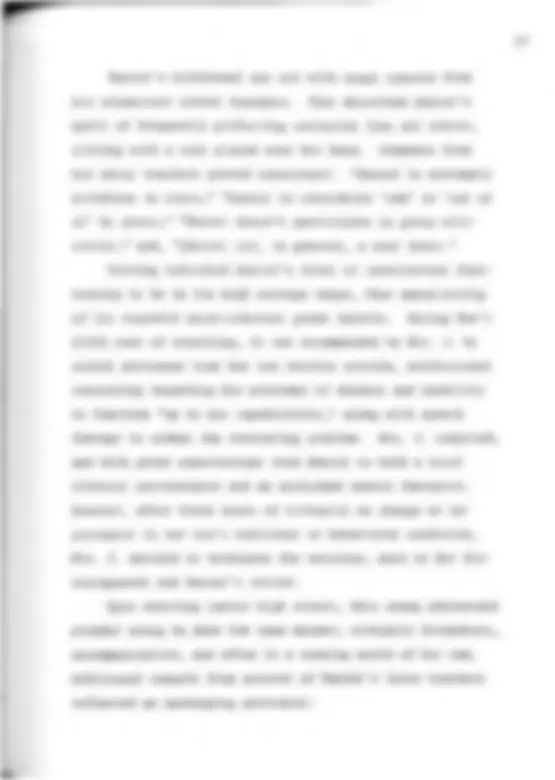
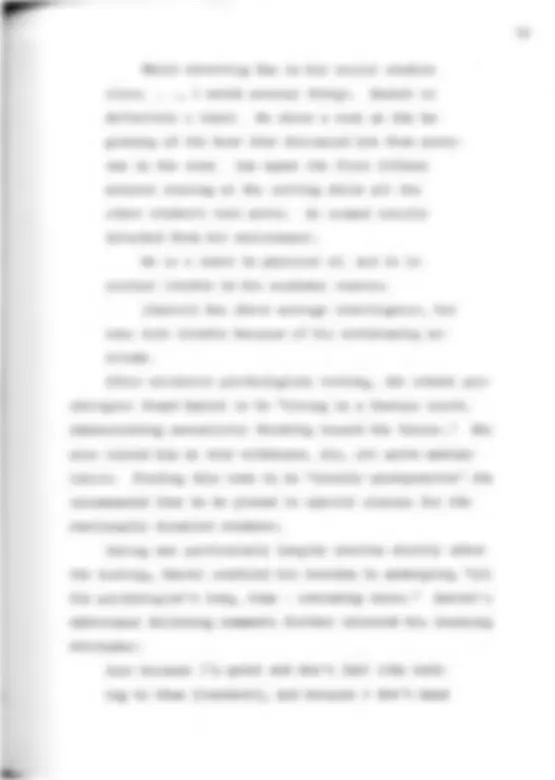
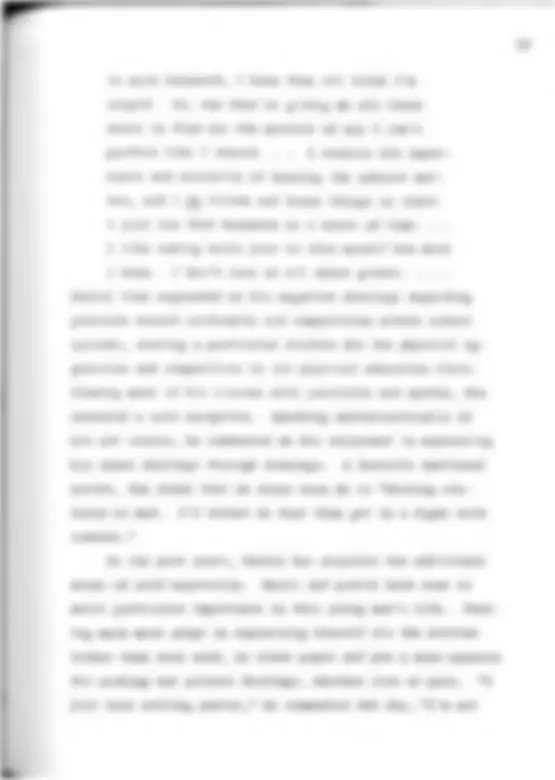
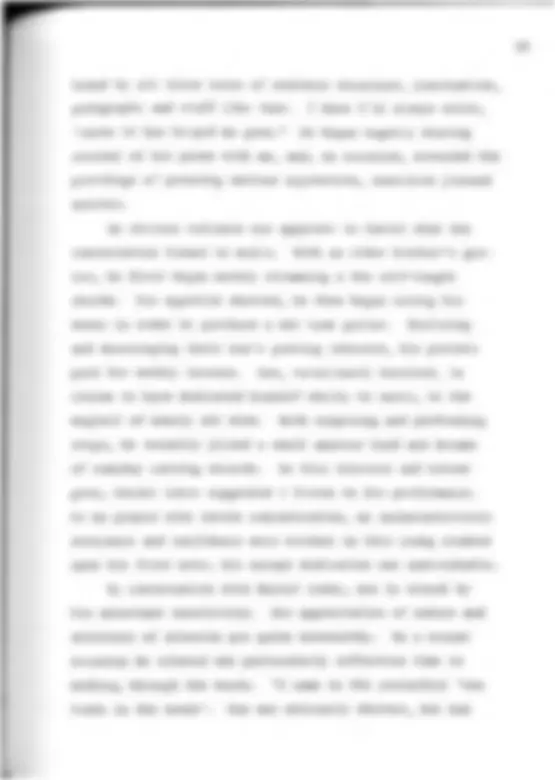
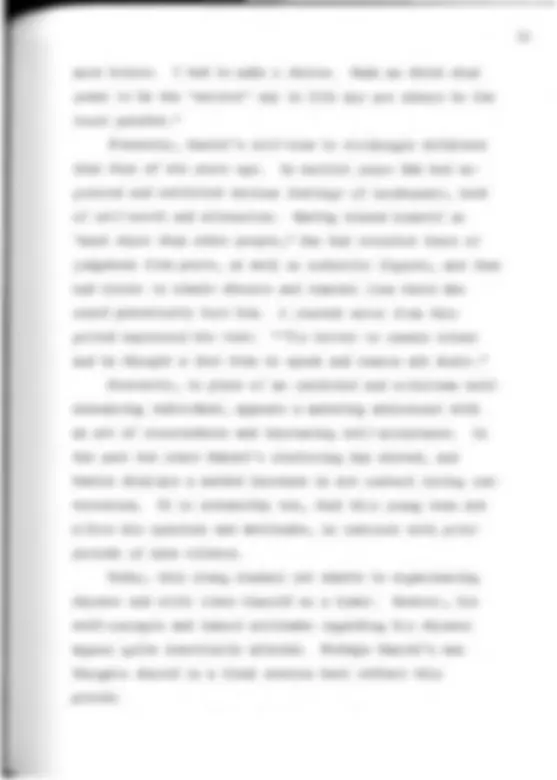
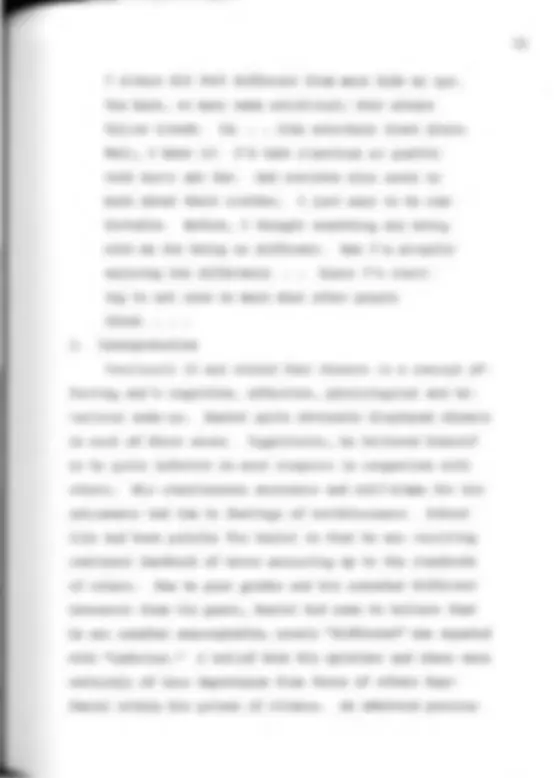
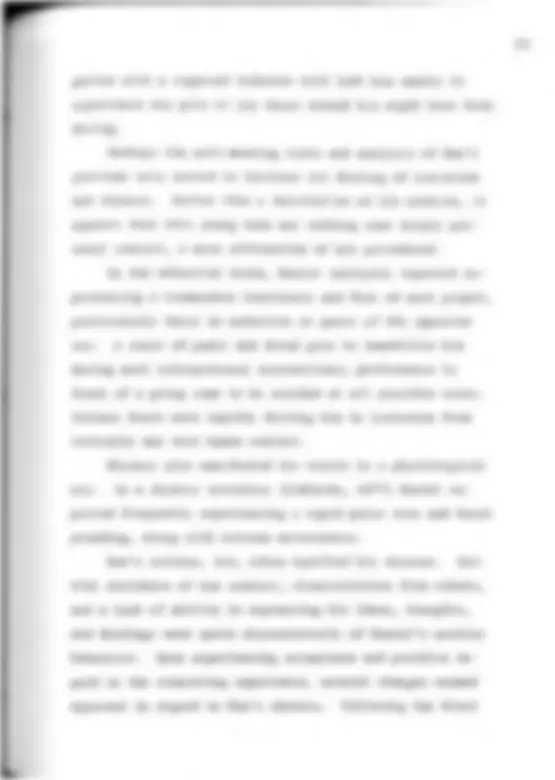
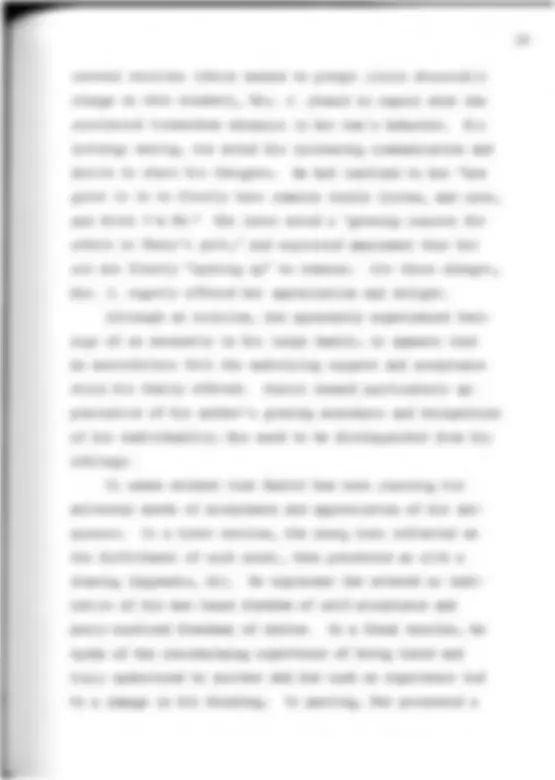
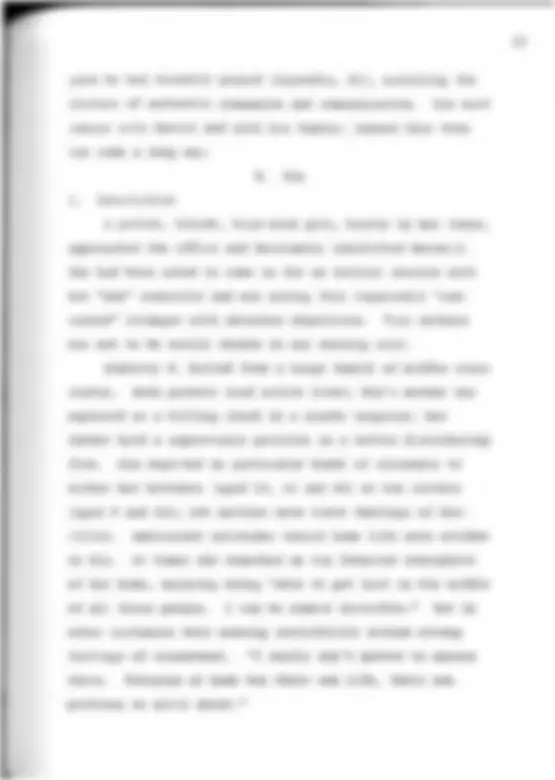
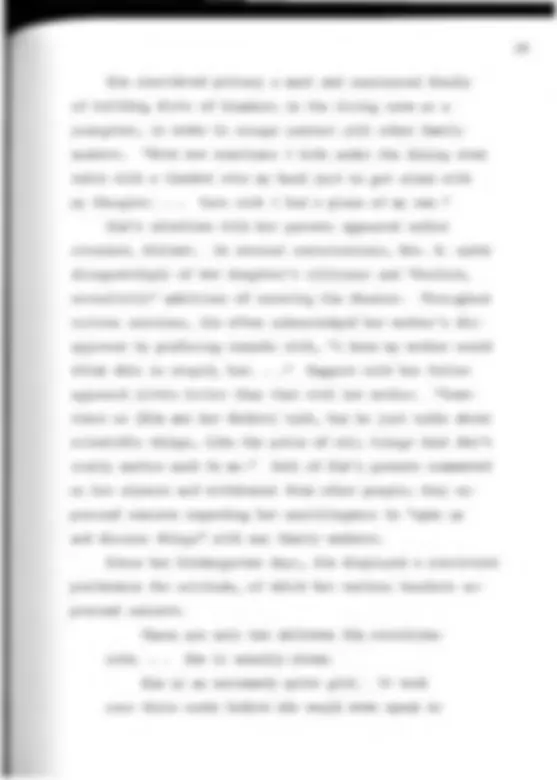
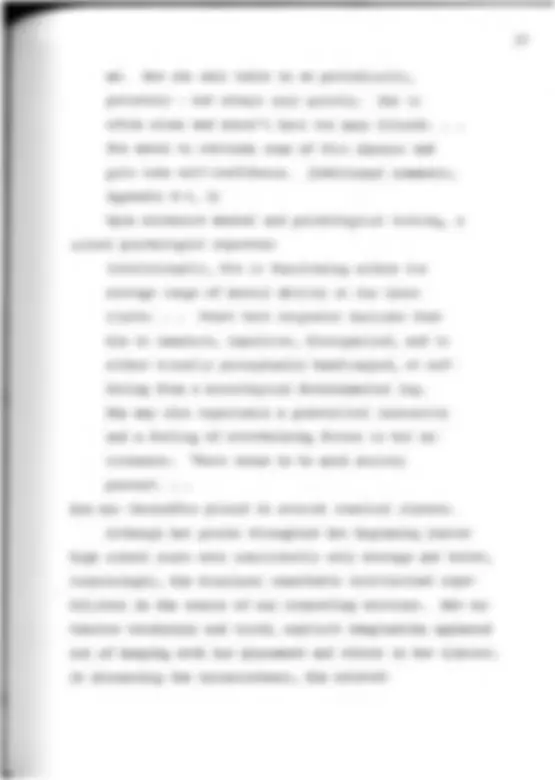
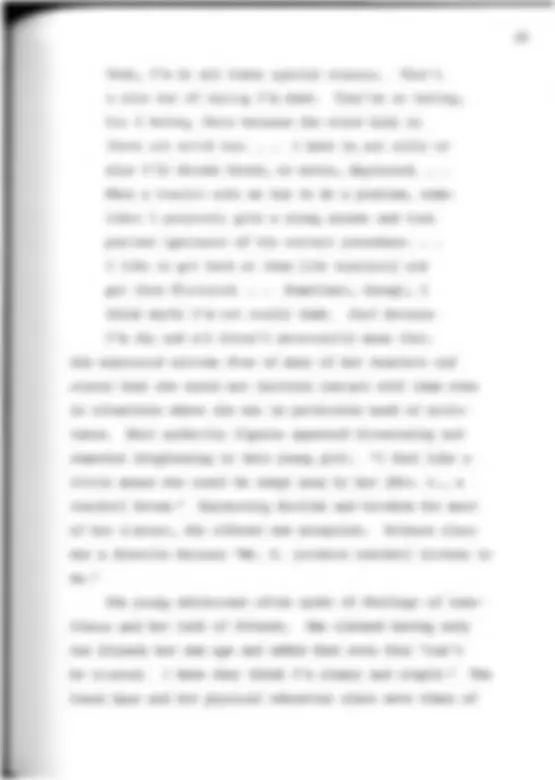
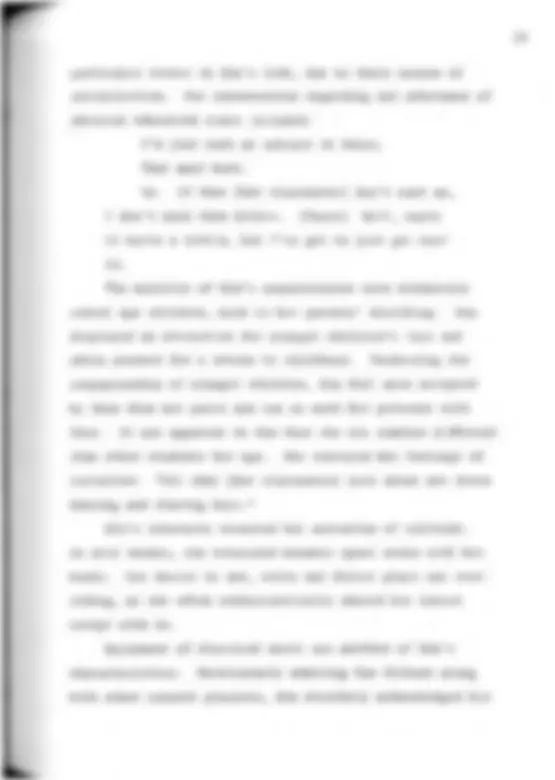
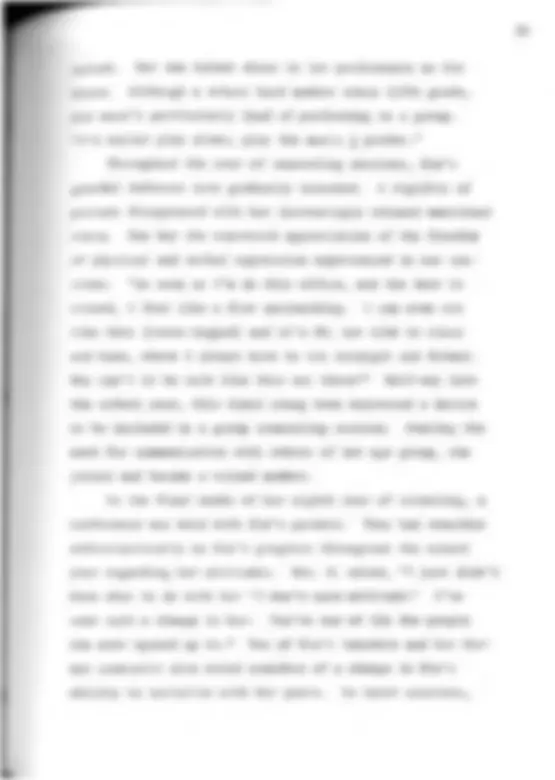
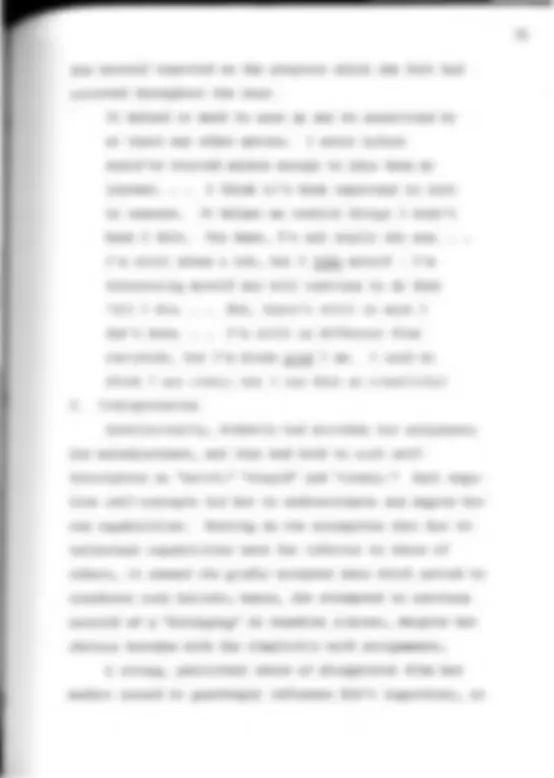
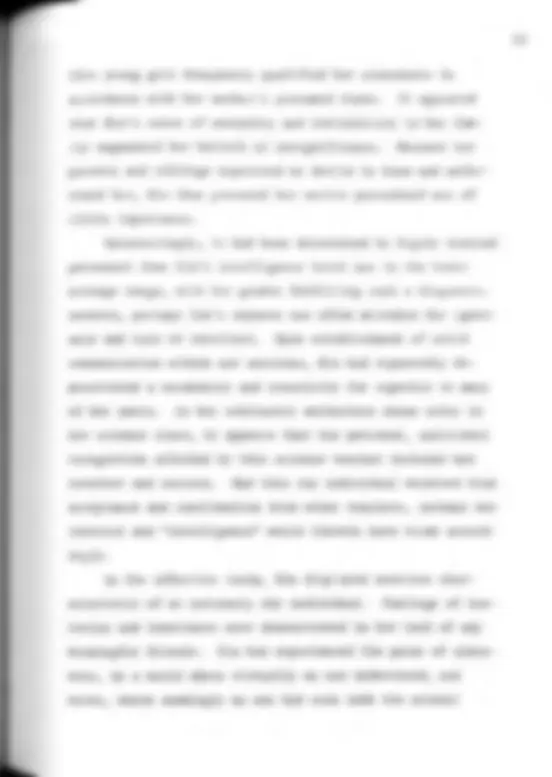
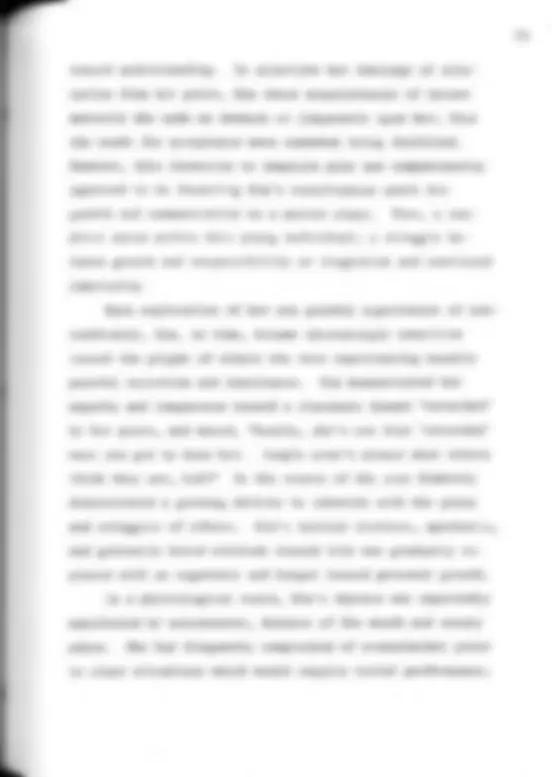
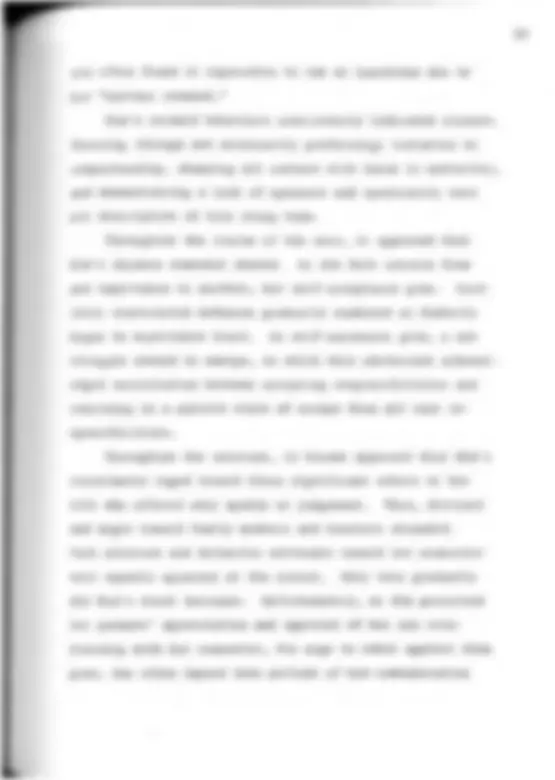
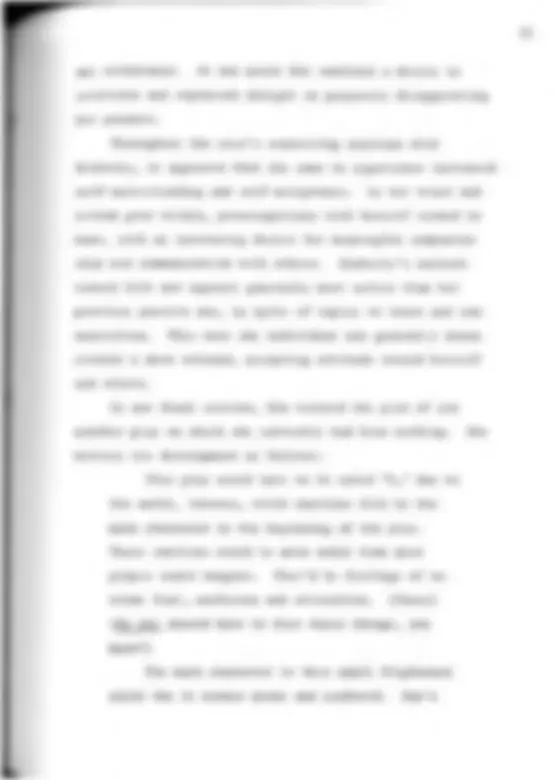

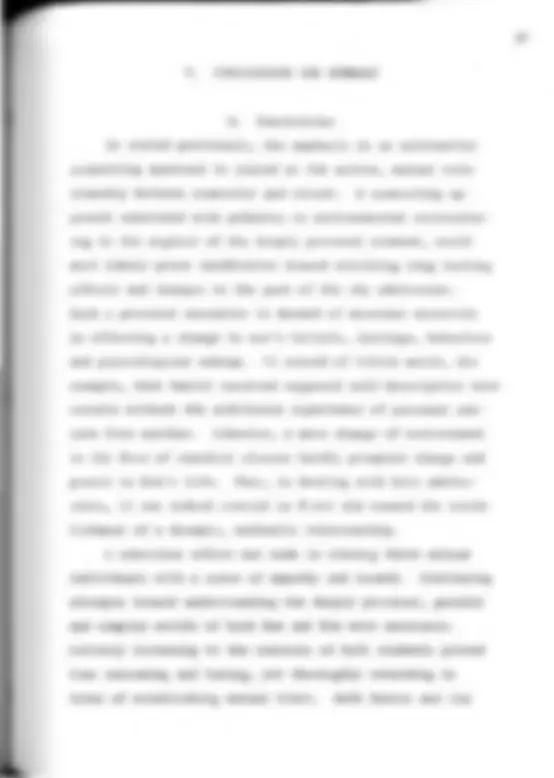
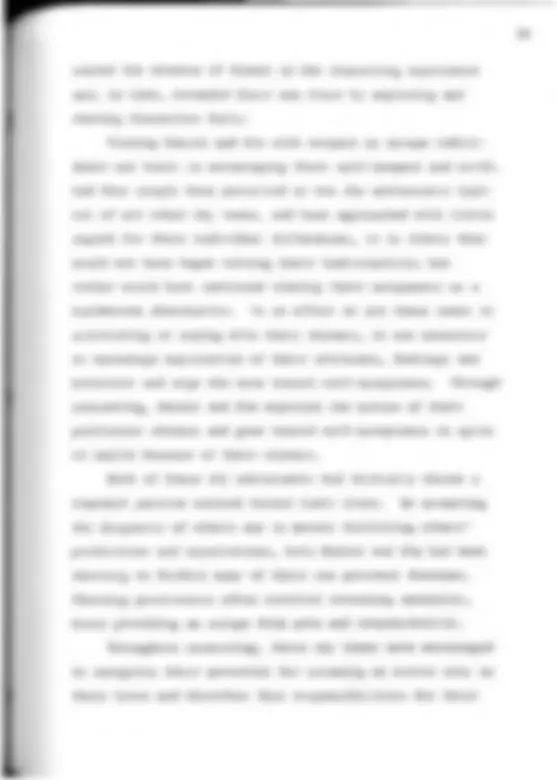
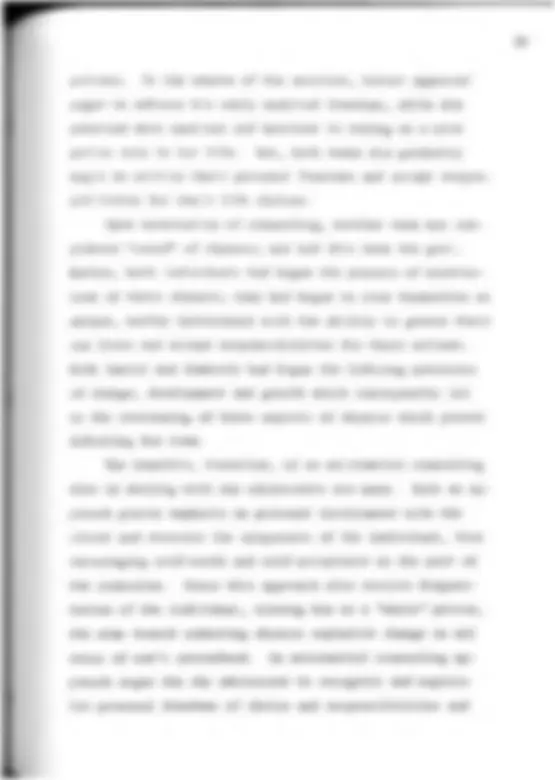
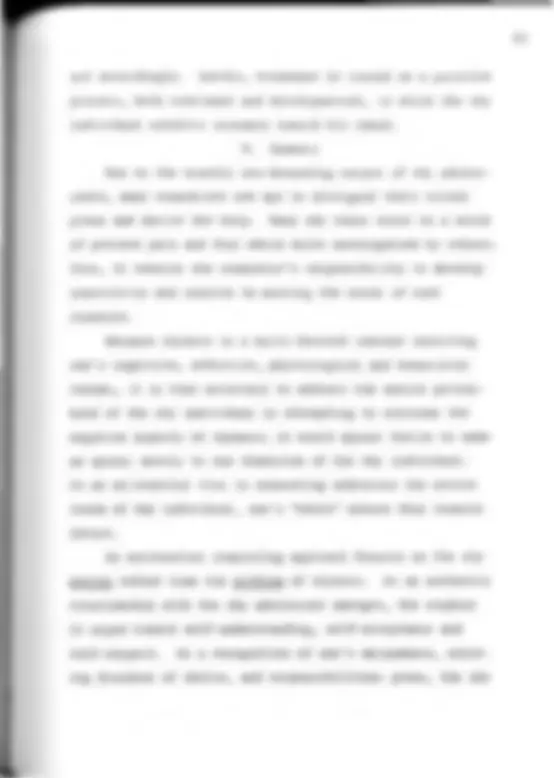
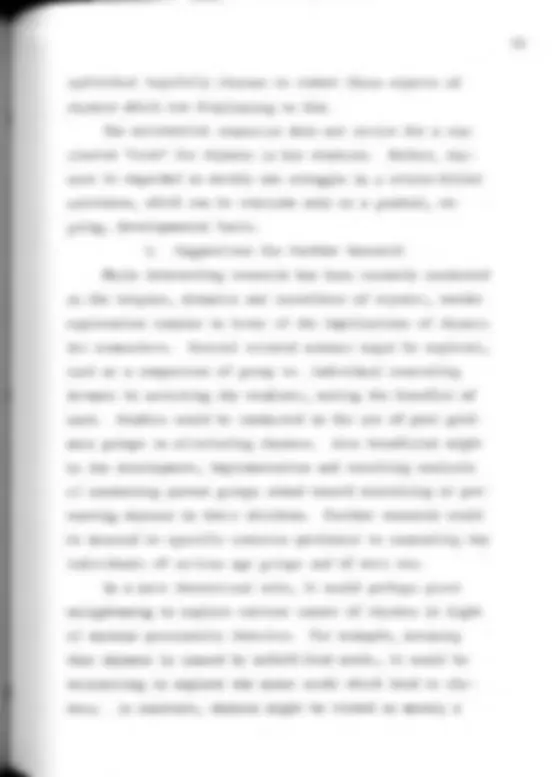
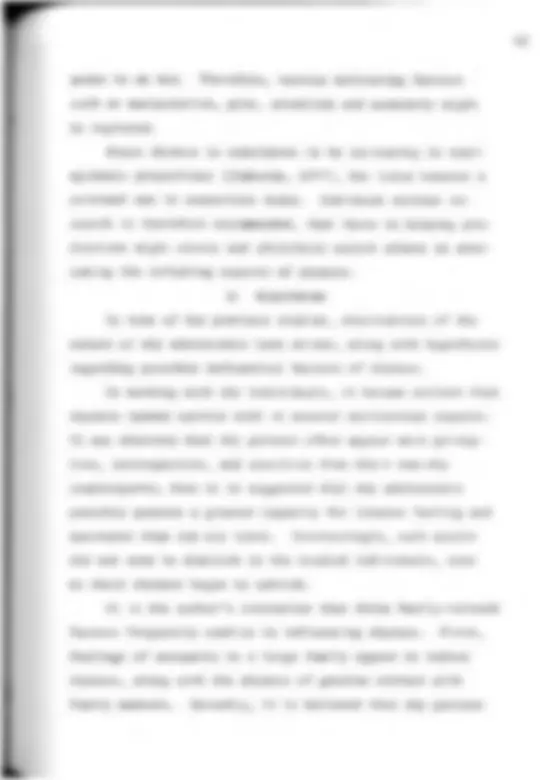
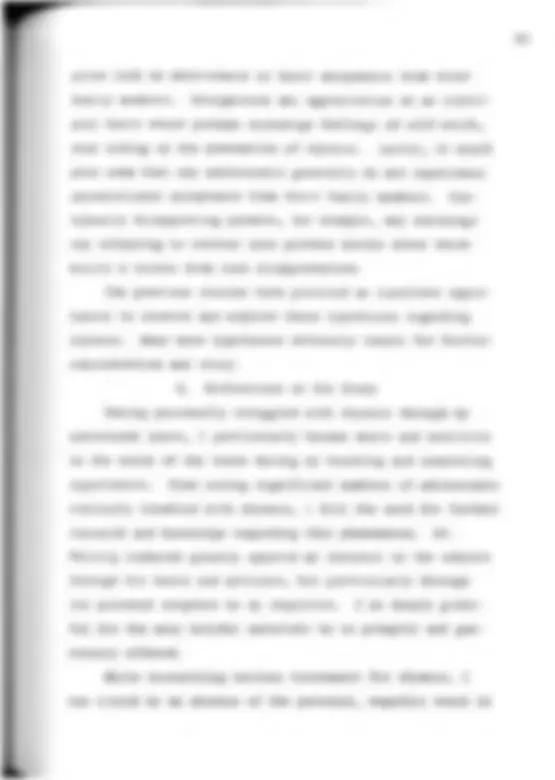
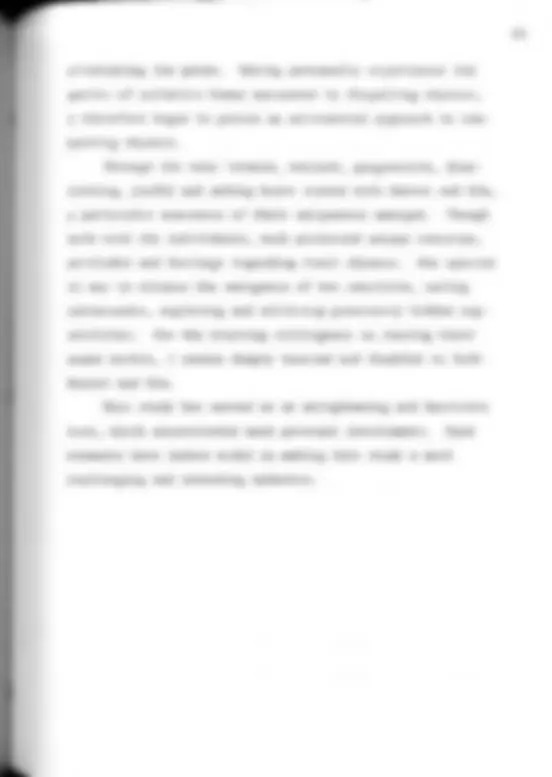
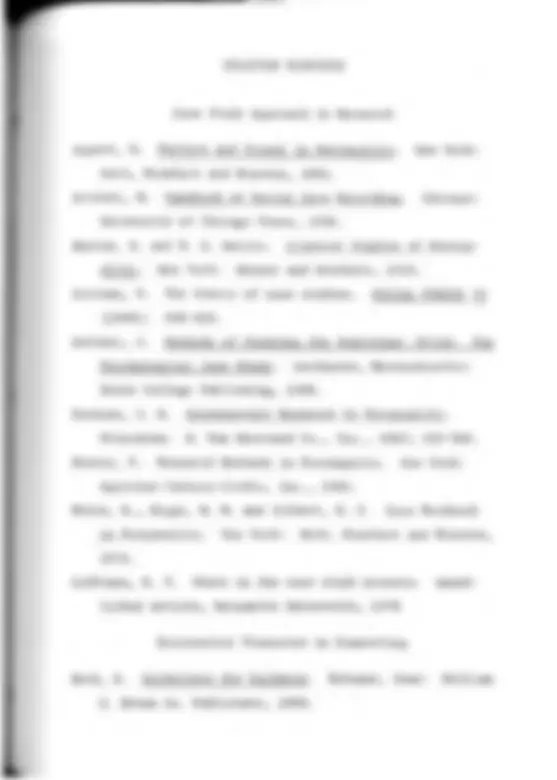
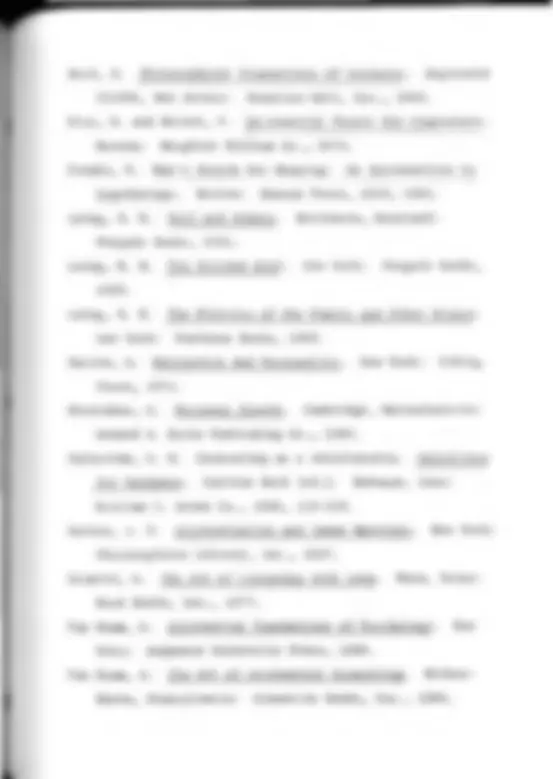
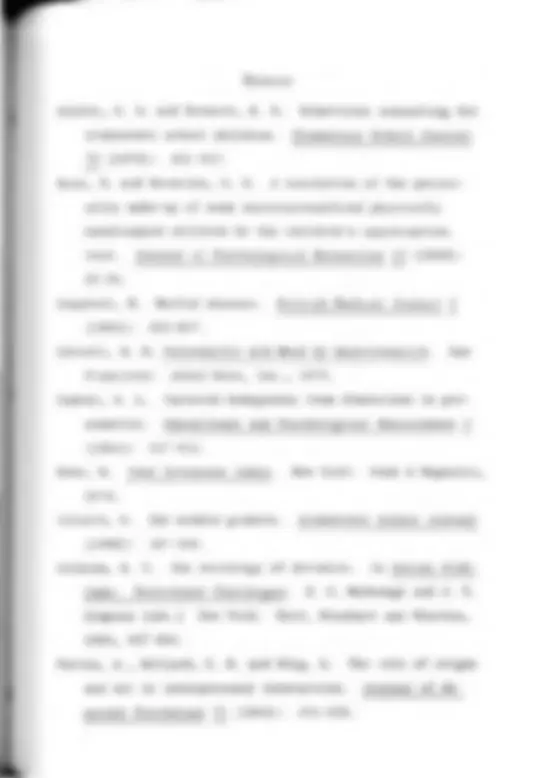

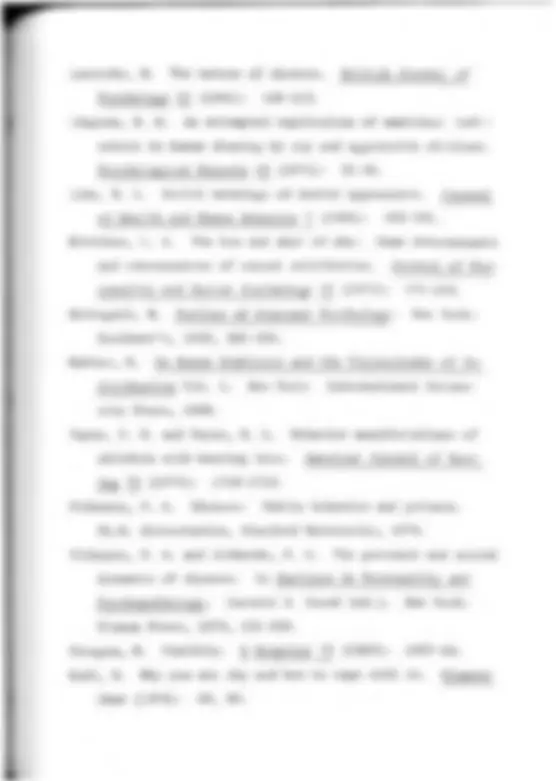
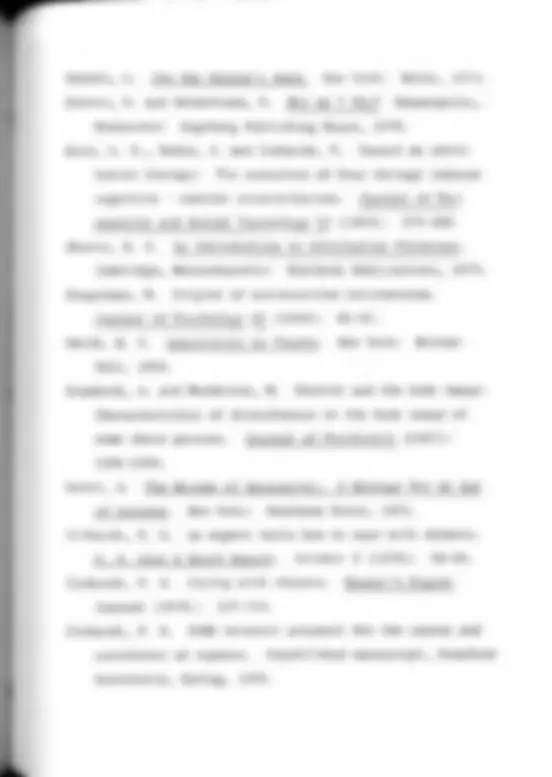






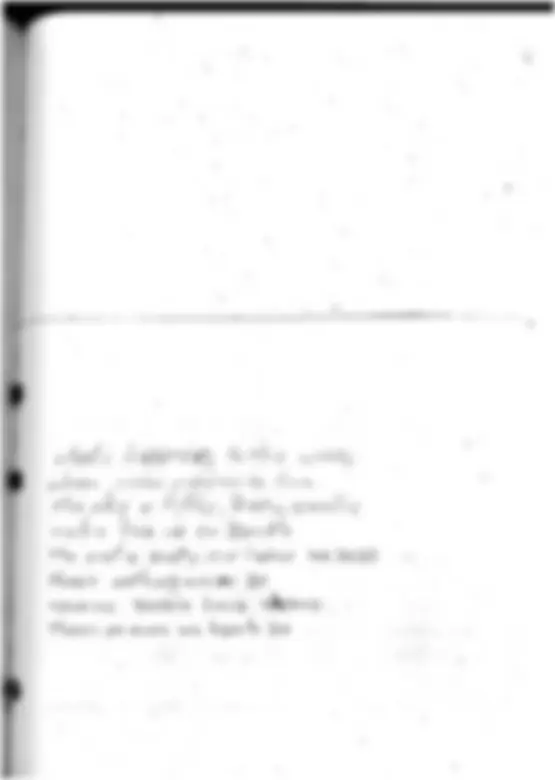
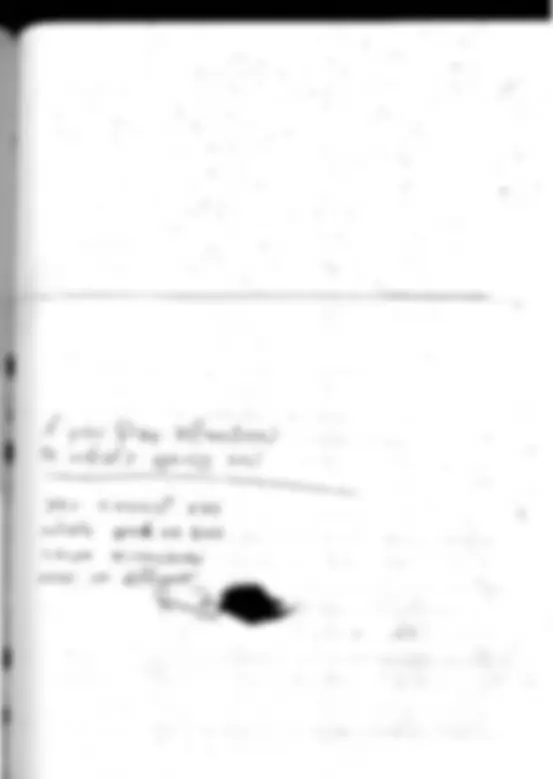


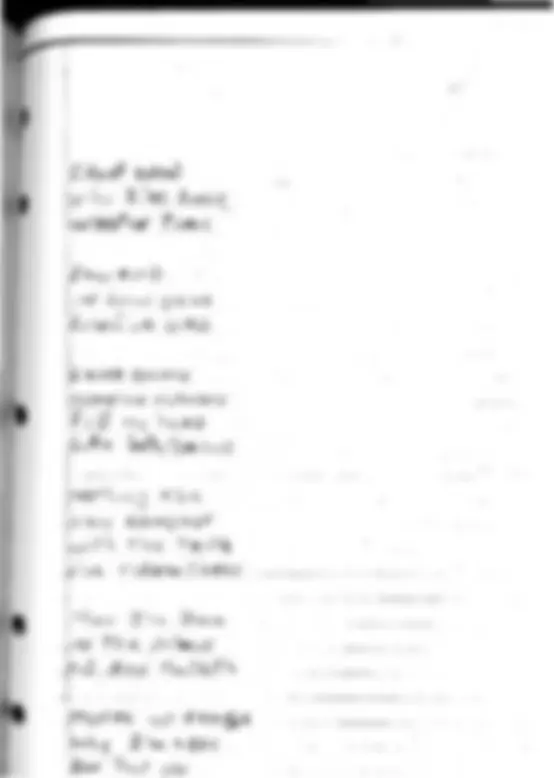
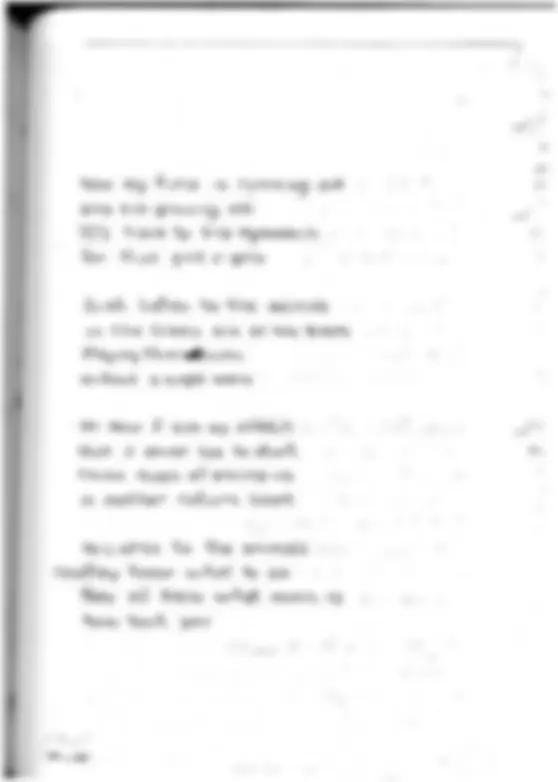


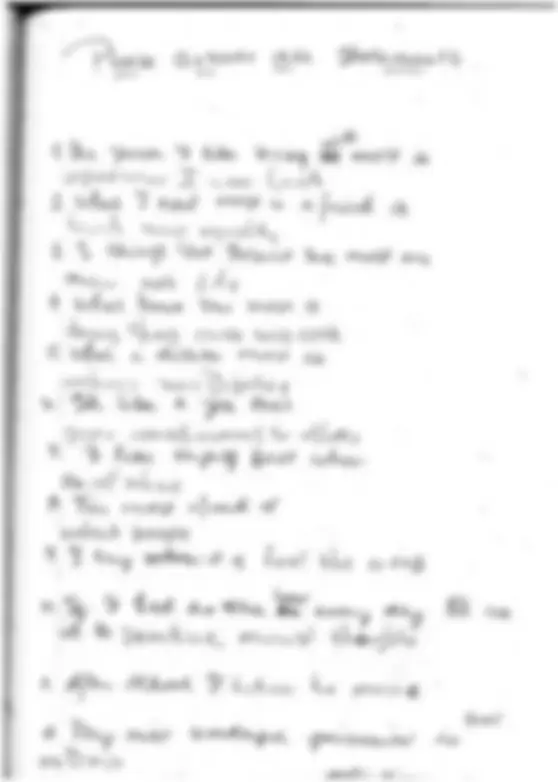
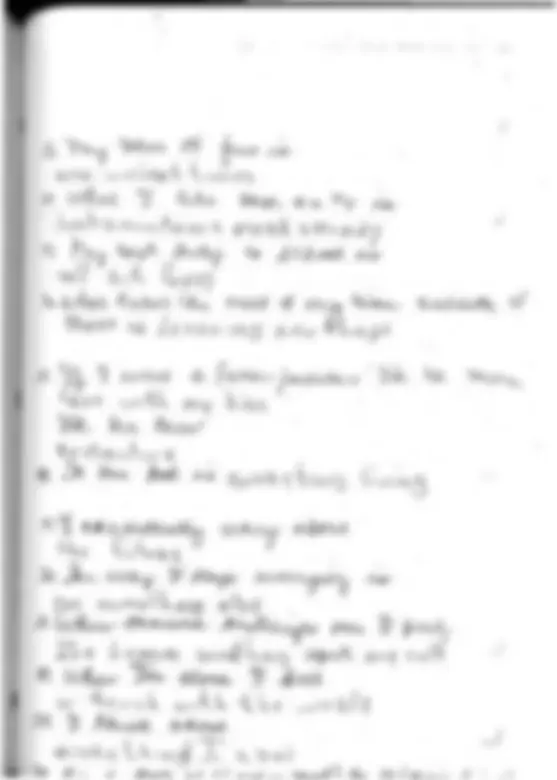
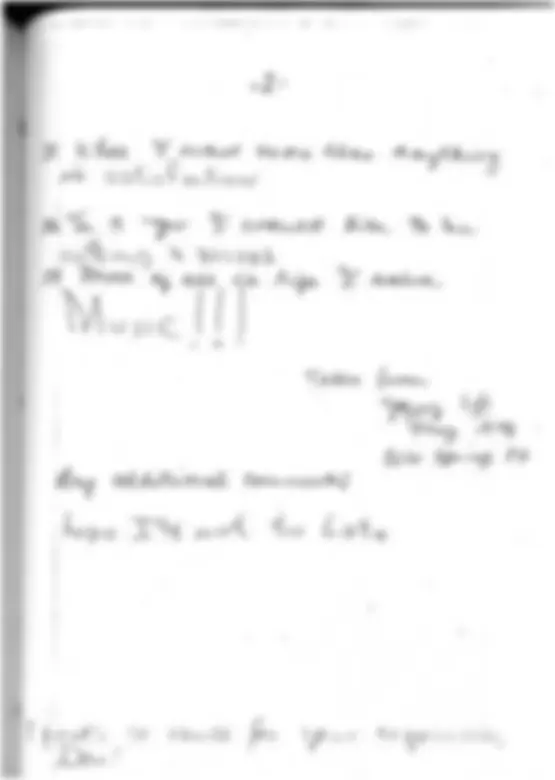







Study with the several resources on Docsity

Earn points by helping other students or get them with a premium plan


Prepare for your exams
Study with the several resources on Docsity

Earn points to download
Earn points by helping other students or get them with a premium plan
Community
Ask the community for help and clear up your study doubts
Discover the best universities in your country according to Docsity users
Free resources
Download our free guides on studying techniques, anxiety management strategies, and thesis advice from Docsity tutors
An existential view in counseling emphasizes the ~- cess rather than method; that is, the counselor-client re- lationship is deemed much more crucial than the ...
Typology: Slides
1 / 75

This page cannot be seen from the preview
Don't miss anything!




































































(^1) I,
Counseling the Shy Adolescent: A Case Study Approach from an Existential Viewpoint by Dianne Folkmann Hardtke, B.A. An Essay Submitted to the Faculty of thein PartialGraduate Fulfillment School, Marquette of the RequirementsUniversity, for the Degree of Master of Education Milwaukee, Wisconsin November, 1979
A. The Problem and Its Importance. B. Definitions
,5 •
Trait-Factor Theory. Psychoanalytic Theory. Behavioral Theory.. Social Theory.... Physiological Theory. Existential Theory .... B. Implications of Literature Review for the Study... III. PROCEDURE FOR STUDY A. Defense of Case Study. B. Description of Case Studies IV. CASE STUDIES .. A. Daniel .. 1.2. Description.Interpretation.
1 3 3 4 8 8 8 9 9 9
10 10 11 12 12 13 15 15 (^1522) 25 25 31
"I am Tired ... of groping for someone to understand, and never finding that (^) one. ... of always reaching, but never quite attaining. I am tired ... of myself, an insecure, hollow being. Tired, yes i am tired."
written by a teenage student in Texas.
A. The Problem and Its Importance Much energy and attention in educational settings is generally devoted to the obvious "problem" adolescents who choose to outwardly display their intense inner struggles and frustrations. Comparatively little attention, however, is focused on the shy, withdrawn student. The unassuming pupil often gains recognition only as a welcomed respite in the myriad of more taxing, demanding students. While shy adolescents face equally crucial struggles and frustrations, due to their chosen low profile, they often remain unassisted and untouched by their counselors. The shy student frequently faces a lonely and needy exis-
1
F
tence, continually struggling with ambivalent desires of recognition and anonymity. Because counselors profess to strive toward meeting the needs of all their students, it is thus imperative that. sensitivity, understanding and concern be particularly ex- hibited toward the unique needs of shy students. How may the particular needs of shy adolescents best be met? Through the years, trait-factor and behaviorist counseling approaches have often been utilized in dealing with the problems of shyness. Recently, such theorists as Zimbardo and Girodo have devoted much study to the issue of shyness and adhere to a sociological approach in their shyness clinics. Obviously, there exists a host of counseling ap- proaches, the merits of each which could long be debated. It is not the intent of this essay to evaluate or contrast these approaches. Rather, it is the writer's desire to ex- plore the benefits of an existential viewpoint in counsel- ing shy adolescents. To add clarity to the intent of this essay, an under- standing must first be reached regarding the concepts "shyness" and an "existential viewpoint" in counseling. Following a discussion of these terms, will be a review of the related literature, a brief defense and description of the procedure of study, two individual case studies, and lastly, implications and conclusions of this study.
2
purpose of this study, a description ' set forth by Pilkonis and Zimbardo (1979) shall be utilized. To them, shyness is a multidimensional concept which includes cognitive, affec- · tive, physiological and behavioral components. Zimbardo (1978) further states that shyness is a It ••• shrinking from human contact with others, often because of a feeling of inferiority and fear of taking risks. Shyness is an alienating force that prevents us from realizing our full potential and enjoying the company of other people. 1t It is the multidimensional aspect of shyness which is particularly noteworthy in this study. Shyness, then, is not mere ignorance of particular social skills; rather, it is an entire attitude and approach to living, comprised of one's beliefs and emotions as well as behaviors.
4
counseling implies that both the counselor and client are active partners in the developing process of making proactive decisions and imple- mentations.
"
An existential view in counseling emphasizes the ~- cess rather than method; that is, the counselor-client re- lationship is deemed much more crucial than the various techniques used. Patterson (1966) describes various char- acteristics of this vital counseling relationship. Recog- nition of the client as a separate, unique being and respect for his personhood are necessary conditions on the part of the counselor, along with genuine, empathic understanding. Manipulations, pressures toward conformity, and judgements have no place in the counseling relationship. In this in- tense relationship, the counselor must also be willing to leave his self-centered world for a time, entering emotion- ally and intellectually into the world of his client. A mutual confidence and trust is imperative in the inter- actions between client and counselor. The absence of threat, along with an atmosphere of openness, honesty and integrity comprise additional characteristics of the coun- seling relationship. The existential relationship in coun- seling perhaps is best typified in Buber's "I-Thou" En- counter, in that the counselor's concern is for the sake of the client. Frey and Heslet (1979) state that the major aim of existential counseling is "to begin with the fact of a per-
5
F
going process which strives toward continual client growth and which disregards immediate, conclusive "remedies."
7
A. Research of Shyness Until recent years shyness had largely been regarded as an innate personality factor which usually somehow dim- inished with chronological age. Much literature exists re- garding the nature and etiology of shyness from such a standpoint. Currently, a contrasting emphasis is emerging in regard to research of shyness. With the assumption that shyness is a learned, rather than inherited factor, present attention is devoted to the consequences of shyness, along with strategies for intervention and treatment. Shyness has been explored from the viewpoint of various theories, such as trait-factor, psychoanalytic, behavioral, social, physiological, and existential theory.
8
Kelley (1971), McArthur (1972), Shaver (1975), and Eriks~ri (1965), along with Ross, Rodin and Zimbardo (1969). Pre- sently, there is also emerging a number of unpublished essays, theses, and dissertations from Stanford University which address various aspects of shyness from a sociological viewpoint. With increasing popularity, the barrage of current "self-help" manuals attack specific problems ranging from weight control to fear of strangers. Accordingly, the prob- lems surrounding shyness have not escaped mention in this realm. Dyer (1976) and Girodo (1978) both offer specific techniques and exercises for overcoming the malady of shy- ness, the latter even boasting a week to ten day "cure" rate!
A few existential writers deal with the issue indirectly; however. Schmitt (1979), in various case studies, alludes to shyness in his emphasis on the existential relationship ' in therapy. Through extensive study and therapy with schizophrenics, Laing (1959) discusses the nature of self- consciousness, which, in part, describes shyness in an ex- treme form. B. Implications of Literature Review for the Study Despite growing recognition and exploration of the nature and treatment of shyness from various theoretical views, the body of related literature from an existential standpoint remains scant. Aside from germane. topics such as loneliness, isolation, alienation, et al., major exis- tential writings leave the topic of counseling the shy individual virtually untouched. Thus, this study proposes to address this issue in exploring the benefits of an exis- tential counseling theory in working with shy adolescents.
which lack the flexibility required when dealing with per- sons, one at a time." It is this writer's contention that a case study approach is most effective in providing in- sight to the unique needs and concerns of shy adolescents. B. Description of Case Studies The subjects selected for the following case studies are two junior high school students with whom the author be- came acquainted while employed as a school counselor in a suburban junior high school. Daniel, a ninth grade male, was initially referred for counseling due to his failing grades. Kim, an eighth grade student, had been referred by a fellow counselor who felt Kim would respond more bene- ficially to a female counselor. A variety of tools were utilized in preparing the case studies which follow. Such tools included several inter- views and sessions with each student, personal observations, anecdotal and cumulative records, tests and inventories, parental and teacher interviews, as well as self-report data, such as drawings, essays, poetry and journal entries. Each tool provided valuable insight into the person- alities of Daniel and Kim from slightly varied perspectives. The numerous individual interviews and sessions with each teen enhanced understanding of the complex components of their shyness. Throughout these hours, relevant patterns of feelings, behaviors, and thoughts gradually emerged. Anecdotal records noted past behaviors of Daniel and Kim, as well as observations and comments from their respec-
13
tive teachers. The cumulative records offered a statement of past grades and school attendance. Scores from intelli- gence and achievement tests were also reported, along with .· results from interest inventories and general aptitude measures. Parental interviews proved extremely valuable by re- vealing past experiences which may have influenced the shy- ness of these adolescents. Both parental and teacher con- ferences served as excellent methods of monitoring changes and/or progress on the part of these students. Self-report data from Daniel and Kim added an indub- itable richness to the studies. The personal and candid written expressions offered by both students revealed a wealth of intense feeling which had been untapped by other sources. In the course of nearly two years, an attempt was thus made to gain insight and an understanding of Daniel and Kim as well-rounded, unique individuals. To further capture a composite picture of these students, observations and in- terviews were conducted in home as well as school settings.
14
family, he resided with two older brothers, two younger stepbrothers, mother, stepfather and pet dog. Home life for Daniel appeared quite unstructured, and at times, per- haps chaotic. In his words, home was a place "where every- thing is happening all at once, and you never really know what is going to happen next." Despite the outgoing, some- what overbearing nature of other family members, mutual support and respect for fellow members appeared quite prev- alent. Living under somewhat cramped conditions, each of the boys slept in the basement, their "rooms" partitioned by thick blankets. While Dan expressed the desire for some- day having a room "with regular walls and real doors and everything," he frequently stated the strong need and ap- preciation for the bit of privacy he could enjoy. He re- flected on many hours of welcomed solitude and escape spent in his own space. Daniel had long been considered shy by parents and teachers alike throughout his childhood and elementary school years. Mrs. J. described her son's younger years as extremely alarming and reclusive: "Always hiding in his own world, Danny would sit for hours in his darkened room, just staring blankly at the wall." Remaining distant from all other family members, Daniel's early school years ap- peared quite lonely and perplexed. Until his seventh year of schooling, Mrs. J. frequently made trips to school with a change of clothing for Daniel, who had difficulty with bladder control.
16
Daniel's withdrawal was met with equal ~oncern from his elementary school teachers. They described Daniel's habit of frequently preferring seclusion from all others, sitting with a coat placed over his head. Comments from his early teachers proved consistent: "Daniel is extremely ' withdrawn in class," "Daniel is considered 'odd' or 'out of it' by peers," "Daniel doesn't participate in group acti- vities," and, "[Daniel is], in general, a real loner." Testing indicated Daniel's level of intellectual func- tioning to be in the high average range, thus unexplaining of his repeated unsatisfactory grade reports. During Dan's fifth year of schooling, it was recommended to Mrs. J. by school personnel that her son receive outside, professional counseling regarding his problems of shyness and inability to function "up to his capabilities," along with speech therapy to combat the stuttering problem. Mrs. J. complied, and with great expectations took Daniel to both a local clinical psychologist and an acclaimed speech therapist. However, after three years of virtually no change or im- provement in her son's emotional or behavioral condition, Mrs. J. decided to terminate the sessions, much to her dis- couragement and Daniel's relief. Upon entering junior high school, this young adolescent plodded along in much the same manner; virtually friendless, uncommunicative, and often in a seeming world of his own. Additional remarks from several of Daniel's later teachers reflected an unchanging portrayal:
17